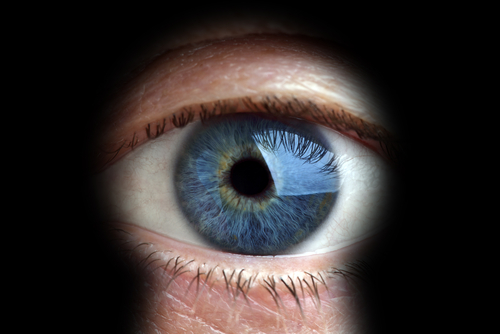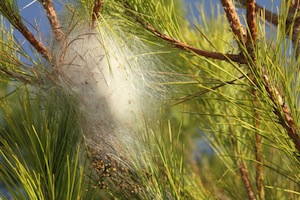 I’m eager to read Dave Eggers’ new book, The Circle. In this novel, a mega-tech company seeks to make the world as “transparent” as possible by encouraging people to place cameras everywhere and share the details of their private lives. The company declares that “ALL THAT HAPPENS MUST BE KNOWN” and “SECRETS ARE LIES.”
I’m eager to read Dave Eggers’ new book, The Circle. In this novel, a mega-tech company seeks to make the world as “transparent” as possible by encouraging people to place cameras everywhere and share the details of their private lives. The company declares that “ALL THAT HAPPENS MUST BE KNOWN” and “SECRETS ARE LIES.”
 In an excerpt published in the New York Times Magazine, a young hire named Mae shows up at the company campus and is immediately awed by its sculpted hills, tree-lined walkways, and curvy blond wood desks, “arranged in groups of five, like petals on a flower.” Coworkers berate her for attending to her sick father without “reaching out” for support to other employees and for kayaking on the weekend without posting any photos online. In the final scene of the excerpt, a company executive presents a new, inexpensive, lollipop-shaped camera that people can deploy anywhere they like and easily stream to their friends’ computers. And eventually, Mae allows the company to document her every move.
In an excerpt published in the New York Times Magazine, a young hire named Mae shows up at the company campus and is immediately awed by its sculpted hills, tree-lined walkways, and curvy blond wood desks, “arranged in groups of five, like petals on a flower.” Coworkers berate her for attending to her sick father without “reaching out” for support to other employees and for kayaking on the weekend without posting any photos online. In the final scene of the excerpt, a company executive presents a new, inexpensive, lollipop-shaped camera that people can deploy anywhere they like and easily stream to their friends’ computers. And eventually, Mae allows the company to document her every move.
We’re not quite there yet. But in the meantime, scientists are making use of pervasive images that already exist on the Internet: Google Street View photos. These roadside pictures, taken by people driving camera-equipped cars down streets from San Francisco to Hong Kong, are mainly used to check out neighborhoods or buildings. Since some images also include wildlife, researchers have investigated whether these online panoramas could provide a cheap way to survey plants and animals.

In a study published earlier this month, a team from France tested how well Google Street View picked up signs of pine processionary moths. These tree-munching pests, whose hairs can cause rashes and allergic reactions in people, are spreading north as the climate warms up. They’re easy to spot in photos because the larvae build white, silky nests in pines and cedars.
First, the researchers drove along roads in France and noted any pine processionary moth nests seen along the way. Then they did the same thing in the virtual world using Google Street View.
In a 46,000-square-kilometer region divided into 183 “cells,” the Google Street View survey correctly identified whether the moths were present or absent in 170 of the cells. Performance was poorer in a 480-square-kilometer area with smaller cells. Still, the researchers concluded that the Google Street View images “were good surrogates for field data” and speculate that the photos could be used to help track the spread of invasive species.
 Other scientists are taking a similar approach. Earlier this year, I wrote about a team in Spain that used Google Street View to survey hard-to-reach cliff habitats. And researchers have done virtual tours of neighborhoods to catalogue features linked to behavioral problems in children, such as graffiti, abandoned cars, and neglected gardens.
Other scientists are taking a similar approach. Earlier this year, I wrote about a team in Spain that used Google Street View to survey hard-to-reach cliff habitats. And researchers have done virtual tours of neighborhoods to catalogue features linked to behavioral problems in children, such as graffiti, abandoned cars, and neglected gardens.
The employees in The Circle include scientific research among their arguments to guilt Mae into sharing more of her life online: Photos of birds and seals taken on her kayaking trips, they say, could help naturalists. “It’s just maddening, thinking of how much knowledge is lost every day through this kind of shortsightedness,” says creepy HR rep Josiah.
I’ll have to read the rest of the book to find out how the plot plays out. But I have a feeling that it won’t just be a happy story of looking for moths.
Image credits
First image © Brian A Jackson | Shutterstock
Second image © Random House
Third image © LFRabanedo | Shutterstock
Fourth image © Oleg Mikhaylov | Shutterstock
Ahhhh Brave New Science. I appreciated this. Especially the book tie-in.